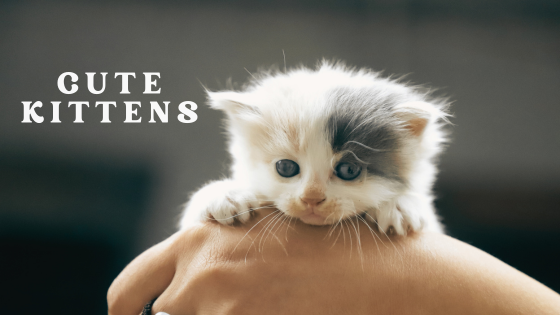What To Do With an Invention Idea?
Having an inventive idea is an exhilarating moment filled with potential. However, transforming that idea into a tangible, successful product can be daunting if you’re unsure where to start. So, what do I do once I have an invention idea? Here’s a step-by-step guide to help you navigate the process from concept to commercialization.
Document Your Idea
The first critical step is to document your invention thoroughly. Keep detailed records of the concept, including sketches, notes, and descriptions. This documentation serves as a preliminary proof of your idea and helps in establishing a timeline for your invention.
Research and Validate Your Idea
Conduct thorough market research to determine if there’s a demand for your invention. Identify your target audience and analyze existing products that may compete with yours. Validation can involve:
- Potential Market: Evaluate the market size and potential customer base for your invention.
- Competitive Analysis: Identify how your invention stands out compared to existing alternatives.
Develop a Prototype
A prototype is a working model of your invention. It doesn’t need to be perfect initially, the goal is to create a tangible version of your idea that you can test and refine. A prototype helps:
- Assess the functionality and usability of your invention.
- Identify potential improvements and modifications.
- Demonstrate your concept to potential investors or partners.
Protect Your Idea
Protecting your intellectual property is essential before you start sharing your idea publicly. There are several ways to protect your invention:
- Patents: Apply for a patent to protect your invention legally. A patent prevents others from making, using, or selling your invention without permission.
- Non-Disclosure Agreements (NDAs): Use NDAs when discussing your invention with potential partners, suppliers, or investors to maintain confidentiality.
Develop a Business Plan
A well-structured business plan is vital for guiding you through the commercialization process. It should include:
- Market Analysis: Detailed research on your target market and competitors.
- Financial Projections: Estimates of startup costs, projected income, and profitability timelines.
- Marketing Strategy: Plans for promoting and selling your invention.
Seek Professional Assistance
Navigating the invention process can be complex, and seeking professional help can be incredibly beneficial. Organizations like InventHelp provide valuable services to inventors at various stages, including patent assistance, prototype development, and marketing support. They can help streamline the process and increase your chances of success.

Maximizing Your Invention’s Potential through Licensing
Once you have developed and protected your invention, the next challenge is commercialization. One effective way to maximize its potential is through licensing.
Licensing involves granting a licensee (another person or company) the rights to manufacture, use, and sell your invention in exchange for royalties or a licensing fee. Here are some benefits of licensing an invention and how InventHelp can assist you in this process.
Benefits of Licensing
Revenue Generation: Licensing can provide a steady stream of income through royalties while allowing you to retain ownership of your invention.
Market Reach: Collaborating with established companies can enable your invention to reach broader markets, enhancing visibility and sales.
Risk Mitigation: Licensing reduces the financial risk associated with manufacturing and marketing your invention independently, as the licensee typically handles these aspects.
Steps for Successful Licensing
Identify Potential Licensees
Research and compile a list of companies that could benefit from your invention. These should be firms in the same industry with the resources and market reach to effectively commercialize your product.
Prepare a Persuasive Pitch
Create a compelling pitch to present to potential licensees. This should include:
- Executive Summary: A brief overview of your invention and its market potential.
- Prototype Demonstration: A working model of your invention to showcase its functionality.
- Market Analysis: Data supporting the demand and profitability of your invention.
Negotiate Licensing Agreements
Once you’ve garnered interest, negotiate the terms of the licensing agreement. Key points to cover include:
- Royalty Rates: The percentage of sales revenue you’ll receive.
- Exclusivity: Whether the licensee has exclusive rights to your invention.
- Duration: The length of the licensing agreement.
How InventHelp Can Assist with Licensing
Licensing offers inventors an opportunity to maximize the potential of their inventions. By collaborating with companies like InventHelp, inventors can forge beneficial licensing agreements. InventHelp’s expert team supports inventors in preparing persuasive pitches and ensuring that their inventions reach a broader market. Here’s how their expert team supports inventors:
- Preparation of Pitches: InventHelp assists in creating professional and persuasive pitches tailored to potential licensees.
- Industry Connections: With extensive industry networks, InventHelp can connect you with suitable companies interested in licensing your invention.
- Negotiation Support: Their experts help you navigate the negotiation process to secure favorable licensing terms.
By collaborating with InventHelp, you can enhance the visibility of your invention and forge beneficial licensing agreements, maximizing its potential in the market.
Conclusion
Transitioning from an invention idea to a marketable product involves several crucial steps, from documentation and prototype development to securing intellectual property rights. Licensing your invention offers significant advantages, including revenue generation, market reach, and risk reduction. With the support of professional assistance like InventHelp, you can navigate this intricate process more efficiently, ensuring your invention reaches its maximum potential.
